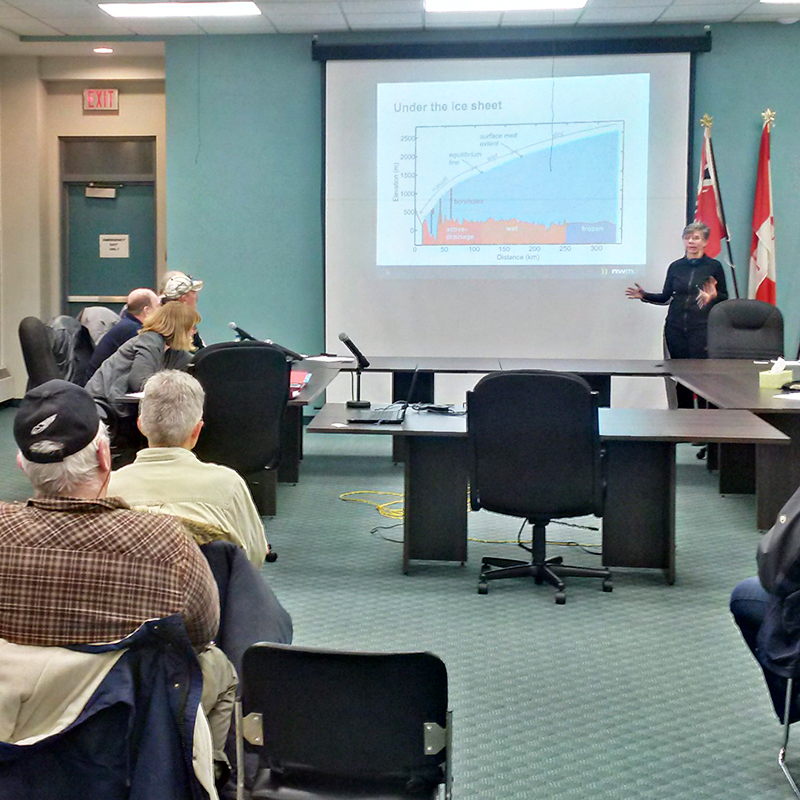At the March meeting of the Manitouwadge Nuclear Waste Community Liaison Committee (NWCLC), one of our geoscientists, Dr. Monique Hobbs, shared exciting news about an international research program she took part in involving ice sheets in Greenland.
The program was conducted over five years and involved six countries that focused on increasing our understanding of ice sheets.
Dr. Hobbs shared information about how over the last million years, Sweden, Finland and Canada have experienced multiple ice ages, with one occurring on average every 100,000 years. Given that deep geological repositories must be able to safely manage used nuclear fuel over this same time frame, it is important that we understand what will happen when the Earth's surface is covered again by thick ice sheets, during future ice ages.
“The Greenland Analogue Project (GAP) is an excellent example of international co-operation and partnerships on research,” said Dr. Hobbs. “The committee and members of the public had lots of great questions. It was a pleasure to meet folks and have the opportunity to share the information with the community.”
Learn more about the Greenland Analogue Project.
The program was conducted over five years and involved six countries that focused on increasing our understanding of ice sheets.
Dr. Hobbs shared information about how over the last million years, Sweden, Finland and Canada have experienced multiple ice ages, with one occurring on average every 100,000 years. Given that deep geological repositories must be able to safely manage used nuclear fuel over this same time frame, it is important that we understand what will happen when the Earth's surface is covered again by thick ice sheets, during future ice ages.
“The Greenland Analogue Project (GAP) is an excellent example of international co-operation and partnerships on research,” said Dr. Hobbs. “The committee and members of the public had lots of great questions. It was a pleasure to meet folks and have the opportunity to share the information with the community.”
Learn more about the Greenland Analogue Project.

